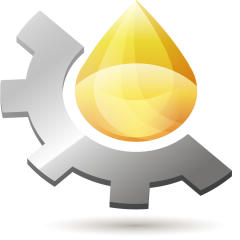A distillation column is a key piece of equipment used in petroleum refineries and chemical plants to separate a mixture of liquids into its individual components or fractions based on their boiling points. The process of separation is known as distillation.
The distillation column consists of a tall vertical cylindrical tower with multiple stages or trays. The column is typically divided into two sections: the upper section is called the rectification section, and the lower section is known as the stripping section.
The mixture to be separated, often referred to as the feed or crude mixture, enters the column near the bottom. The feed is heated and introduced into the column through a feed inlet. Inside the column, the feed is exposed to a temperature gradient. As the temperature decreases with increasing height in the column, the different components of the mixture start to vaporize.
As the vapor rises through the column, it comes into contact with the trays or stages. Each tray consists of perforations or bubble caps that allow the vapor to pass through while ensuring intimate contact with the liquid on the tray. The liquid, referred to as the reflux, flows downward through the trays.
The process of distillation relies on the principle that the components of a mixture have different boiling points. As the vapor rises, the components with lower boiling points vaporize more readily and tend to concentrate in the upper section of the column, while the components with higher boiling points remain in the liquid phase and collect in the lower section of the column.
At the top of the column, a condenser is present. The condenser cools down the rising vapor, causing it to condense into liquid form. This liquid, known as the distillate or overhead product, is collected and separated from the non-condensable gases.
At the bottom of the column, a reboiler is used to provide heat, maintaining the necessary temperature for the separation process. The reboiler heats the liquid collected in the lower section, causing it to vaporize and rise through the column. This vapor, called the bottoms product or residue, contains the components with higher boiling points.
The separation efficiency of the distillation column can be enhanced by using additional equipment such as reflux drums, which help control the liquid-vapor flow and improve the separation of components.
Overall, the distillation column plays a crucial role in refining processes by effectively separating a complex mixture of hydrocarbons or other liquids into its individual components, allowing for the production of various valuable products with specific properties and characteristics.
A distillation column is a key piece of equipment used in petroleum refineries and chemical plants to separate a mixture of liquids into its individual components or fractions based on their boiling points. The process of separation is known as distillation.
The distillation column consists of a tall vertical cylindrical tower with multiple stages or trays. The column is typically divided into two sections: the upper section is called the rectification section, and the lower section is known as the stripping section.
The mixture to be separated, often referred to as the feed or crude mixture, enters the column near the bottom. The feed is heated and introduced into the column through a feed inlet. Inside the column, the feed is exposed to a temperature gradient. As the temperature decreases with increasing height in the column, the different components of the mixture start to vaporize.
As the vapor rises through the column, it comes into contact with the trays or stages. Each tray consists of perforations or bubble caps that allow the vapor to pass through while ensuring intimate contact with the liquid on the tray. The liquid, referred to as the reflux, flows downward through the trays.
The process of distillation relies on the principle that the components of a mixture have different boiling points. As the vapor rises, the components with lower boiling points vaporize more readily and tend to concentrate in the upper section of the column, while the components with higher boiling points remain in the liquid phase and collect in the lower section of the column.
At the top of the column, a condenser is present. The condenser cools down the rising vapor, causing it to condense into liquid form. This liquid, known as the distillate or overhead product, is collected and separated from the non-condensable gases.
At the bottom of the column, a reboiler is used to provide heat, maintaining the necessary temperature for the separation process. The reboiler heats the liquid collected in the lower section, causing it to vaporize and rise through the column. This vapor, called the bottoms product or residue, contains the components with higher boiling points.
The separation efficiency of the distillation column can be enhanced by using additional equipment such as reflux drums, which help control the liquid-vapor flow and improve the separation of components.
Overall, the distillation column plays a crucial role in refining processes by effectively separating a complex mixture of hydrocarbons or other liquids into its individual components, allowing for the production of various valuable products with specific properties and characteristics.

